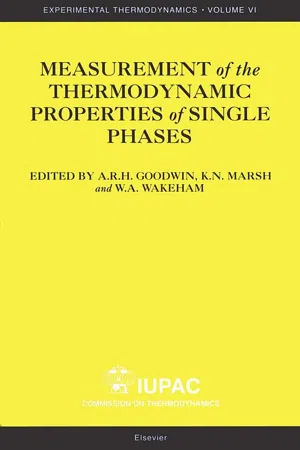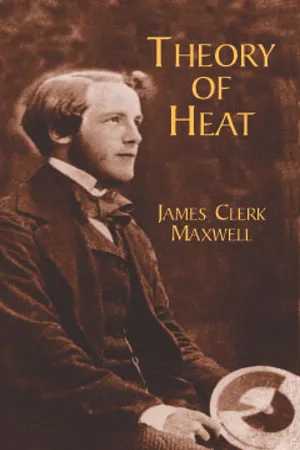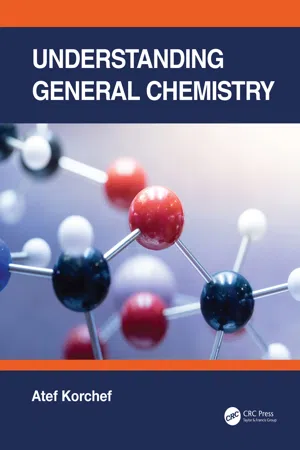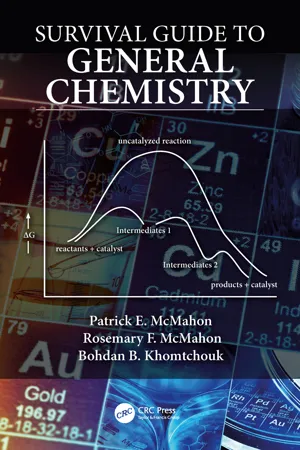Chemistry
Calorimetry
Calorimetry is the scientific measurement of heat transfer in chemical reactions and physical processes. It involves using a calorimeter to measure the heat changes associated with a reaction or a physical change. By quantifying these heat changes, calorimetry provides valuable information about the energy transformations occurring in a system.
Written by Perlego with AI-assistance
Related key terms
10 Key excerpts on "Calorimetry"
- eBook - ePub
Science of Heat and Thermophysical Studies
A Generalized Approach to Thermal Analysis
- Jaroslav Sestak(Author)
- 2005(Publication Date)
- Elsevier Science(Publisher)
Chapter 12THERMOMETRY AND Calorimetry
12.1. Heat determination by Calorimetry
Various thermometric assessments have been in the center of retailored techniques used to detect a wide variety of heat effects and properties. The traditional operation aims to measure, for example, heat capacities, total enthalpy changes, transitions and phase change heats, heats of adsorption, solution, mixing, and chemical reactions. The measured data can be used in a variety of clever ways to determine other quantities. Special role was executed by methods associated with enough adequate temperature measurements, which reveals an extensive history coming back to the first use of the word ‘calorimeter’ introduced by the work Wilcke and later used by Laplace, Lavoisier as already discussed in the previous Chapter 4 .Calorimetry is a direct and often the only way of obtaining the data in the area of thermal properties of materials, today especially aimed to higher temperatures. Detailed descriptions are available in various books [3 , 9 , 590 –596 ] and reviews [597 –599 ]. Although the measurements of heat changes is common to all calorimeters, they defer in how heat exchanges are actually detected, how the temperature changes during the process of making a measurement are determined, how the changes that cause heat effects to occur are initiated, what materials of construction are used, what temperature and pressure ranges of operation are employed, and so on. We are not going to describe herewith the individual peculiarities of instrumentation as we merely focus our attention to a brief methodical classification.If the calorimeter is viewed as a certain ‘black box’ [3] , whose input information are thermal processes and the output figures are the changes in temperature or functions derived from these changes. The result of the measurement is an integral change whose temperature dependence is complicated by the specific character of the given calorimeter and of the measuring conditions. The dependence between the studied and measured quantity is given by a set of differential equations, which are difficult to solve in the general case. For this reason, most calorimetric measurements are based on calibration. A purely mathematical solution is the domain of a few theoretical schools [3 , 594 , 596 - eBook - ePub
Bioanalytics
Analytical Methods and Concepts in Biochemistry and Molecular Biology
- Friedrich Lottspeich, Joachim W. Engels(Authors)
- 2018(Publication Date)
- Wiley(Publisher)
4 MicroCalorimetryAlfred BlumeMartin-Luther-University Halle-Wittenberg, Faculty of Chemistry, Physics and Mathematics, Institute of Chemistry - Physical Chemistry, von Danckelmann Platz 4, 06120 Halle/Saale, GermanyCalorimetry is a method used to determine the exchange of heat between a closed system and its surroundings. The method is already quite old and was based on initial observations at the end of the eighteenth century that ice takes up heat during melting without changing its temperature. The term “latent heat” was coined for this effect (Joseph Black, Edinburgh). Most of the calorimetric measurements performed at that time had the goal of understanding chemical and physical processes. However, the first applications to biological systems were also performed. Lavoisier, for instance, built around 1780 the first ice calorimeter devised for determining the metabolism of a guinea pig by measuring the amount of molten ice. This apparatus was based on the insight of Joseph Black about the latent heat (heat of melting) of ice.Calorimetry became soon a widespread method in chemistry and physics for the determination of thermodynamic properties of materials. Comprehensive data on specific heats, heats of reaction, and heats of phase transitions were collected and tabulated. Calorimetry as a useful tool to study biological systems was only recognized much later and more extensive applications appeared only in the last 20–30 years. The technical development of the mechanical and electronic hardware was a prerequisite for this progress, because higher sensitivity is needed for the thermodynamic characterization of biological samples due to the fact that sometimes only low amounts of material are available. Because of this development of more and more sensitive instruments needing minute amounts of sample the term “microCalorimetry” was introduced. - Anthony Goodwin, KN Marsh, WA Wakeham(Authors)
- 2003(Publication Date)
- Elsevier Science(Publisher)
7Calorimetry
K.N. Marsh Department of Chemical and Process EngineeringUniversity of Canterbury Christchurch, New ZealandJ.B. Ott Department of Chemistry Brigham Young University Provo, UT, USAC.J. Wormald Department of Chemistry University of Bristol Bristol, UKH. Yao Department of Condensed Matter Physics Tokyo Institute of Technology Tokyo JapanI. Hatta Department of Applied Physics Nagoya University Nagoya, JapanP.M. Claudy Laboratoire des Matériaux Organiques à Propriétés Spécifiques Centre National de la Recherche Scientifique Vernaison FranceS. Van Herwaarden Xensor Intergration Delft, NetherlandsCalorimetry is a fundamental thermodynamic measurement required for the design of thermal processes and the understanding of molecular interactions with a statistical mechanical model. The major advances in Calorimetry since Experimental Thermodynamics , Volume II have been described recently in Experimental Thermodynamics , Volume IV . This chapter focuses on instruments that were not previously described; these include various flow calorimetric techniques for measuring enthalpy differences of fluids, ac Calorimetry, and differential scanning Calorimetry.7.1 Flow Calorimetry
K.N. MARSH, Department of Chemical and Process Engineering , University of Canterbury Christchurch , New ZealandJ.B. OTT, Department of Chemistry , Brigham Young University , Provo , UT , USAC.J. WORMALD, Department of Chemistry , University of Bristol , Bristol , UKIn recent years flow Calorimetry has become the method of choice for the measurement of heat effects occurring in mixing processes, or for the determination of the heat capacity of fluids and fluid mixtures. Experimental Thermodynamics , Volume IV , Solution Calorimetry , edited by Marsh and O’Hare, was published in 1994 [1] and documented the advances in experimental techniques used for solution Calorimetry since the 1962 publication of Experimental Thermochemistry , Volume 2 , edited by Skinner [2] . In Chapter 4 of Solution Calorimetry , Grolier documents the use of flow Calorimetry to measure the heat capacity of both pure fluids and fluid mixtures. Detailed descriptions of the Picker et al. flow microcalorimeter [3] and the Ernst et al. high-pressure calorimeter [4] are given in reference [1] . Chapter 5 of reference [1] , by Albert and Archer, describes various flow calorimeters developed by Wood and coworkers [5] , that were designed primarily to measure the enthalpies of dilution and heat capacities of aqueous electrolyte solutions at temperatures from ambient to 600 K and pressures up to 60 MPa. In Chapter 11 of reference [1] , Simonson and Mesmer describe the Oak Ridge National Laboratory heat flux flow calorimeter [6] used for electrolyte solutions. Ott and Wormald in Chapter 8 of reference [1] discuss a variety of flow techniques developed to measure the excess enthalpies of liquid and gas mixtures. These included high-temperature, high-pressure calorimeters developed by Christensen and Izatt [7] , for the measurement of the enthalpy of mixing of organic liquids, and the calorimeters developed by Wormald and co-workers [8 ,9] , for measurements on supercritical fluid mixtures, particularly mixtures containing steam as a component. Stokes, in Chapter 7 of reference [1]- eBook - ePub
- (Author)
- 2012(Publication Date)
- Dover Publications(Publisher)
CHAPTER III.
Calorimetry.
HAVING explained the principles of Thermometry, or the method of ascertaining temperatures, we are able to understand what we may call Calorimetry, or the method of measuring quantities of heat.When heat is applied to a body it produces effects of various kinds. In most cases it raises the temperature of the body; it generally alters its volume or its pressure, and in certain cases it changes the state of the body from solid to liquid or from liquid to gaseous.Any effect of heat may be used as a means of measuring quantities of heat by applying the principle that when two equal portions of the same substance in the same state are acted on by heat in the same way so as to produce the same effect, then the quantities of heat are equal.We begin by choosing a standard body, and defining the standard effect of heat upon it. Thus we may choose a pound of ice at the freezing point as the standard body, and we may define as the unit of heat that quantity of heat which must be applied to this pound of ice to convert it into a pound of water still at the freezing point. This is an example of a certain change of state being used to define what is meant by a quantity of heat. This unit of heat was brought into actual use in the experiments of Lavoisier and Laplace. - eBook - ePub
- Jeffrey Gaffney, Nancy Marley(Authors)
- 2017(Publication Date)
- Elsevier(Publisher)
So, these changes in internal energy can be measured by designing the experiment to maintain constant pressure or constant volume and assure that heat is not lost to the surroundings. A device that is used to measure the heat released or absorbed during a chemical reaction or phase change is called a calorimeter. The process of making this measurement is called Calorimetry. To determine the heats of reactions, known amounts of materials are placed into a calorimeter and the temperatures of the initial and final states are measured. If the heat capacity of the calorimeter is known, the amount of heat absorbed or released can be determined directly. Errors arise from the fact that some heat is lost to the surroundings. There is also some heat loss in making the actual measurements with a thermometer or thermocouple, which takes up a small amount of heat in order to make the measurement. The early chemists Antoine Lavoisier and Pierre-Simon Laplace used a constant pressure ice calorimeter shown in Fig. 8.5 to measure the heat of fusion of ice for the first time. The calorimeter had three concentric sheet iron chambers. The inner chamber (M), which held the sample, was surrounded by a middle chamber (A) and an outer chamber (B), both of which were filled with ice. The ice-filled outer chamber served as a means of isolating the inner chamber from the surroundings. The ice-filled middle chamber absorbs the heat given off by the sample in the inner chamber. The heat melts the ice in the middle chamber and the amount of heat is calculated from the amount of ice that melts and the specific heat capacity of ice. Fig. 8.5 An engraving of the constant pressure ice calorimeter made by Marie Lavoisier, wife of Antoine Lavoisier - eBook - ePub
- Atef Korchef(Author)
- 2022(Publication Date)
- CRC Press(Publisher)
Heat of 300 J are released by the surroundings which means that 300 J of heat are absorbed by the system. As a consequence, the amount of heat is considered to be positive. Therefore, we have q = 300 J.Work (450 J) is performed on the surroundings, meaning that 450 J of work are done by the system. Consequently, the amount of work is considered to be negative. Therefore, we have w = −450 J.The change in the internal energy is given by:Δ U = q + wReplacing givesThis means that the system loses 150 J, but the surroundings gain 150 J.Δ U = 300 += − 150 J− 4505.6 Calorimetry
5.6.1 Principles of Calorimetry
Calorimetry is defined as the measurement of heat released or absorbed during a chemical reaction or a physical process. The measurement of heat can be performed using a calorimeter (Figure 5.4 ). A calorimeter consists of a metallic vessel filled with water and suspended above a reaction chamber. A stirrer and a thermometer are immersed in the metallic vessel. The thermometer allows measurement of any change in thermal properties inside the metallic vessel. The vessel and the reaction chamber are kept in insulating jackets to prevent heat loss into the surroundings. The heat release or absorption causes a change in the water temperature. For example, when an exothermic reaction occurs in the reaction chamber, the heat produced by the reaction is absorbed by the water, the temperature of which increases. Conversely, when an endothermic reaction occurs, the heat required is absorbed from the thermal energy of the water, which decreases in temperature. The temperature change, along with the specific heat and mass of water, allows determination of the amount of heat involved in the exothermic and endothermic processes.FIGURE 5.4 Schematic illustration of a calorimeter5.6.2 Heat Capacity and Specific Heat
The heat capacity is the amount of energy required to increase the temperature of a substance by 1 K (or 1°C). The heat capacity, expressed in J K−1 , is given by the following equation:C =qΔ Twhere q is the heat and ΔT is the temperature change. Rearranging givesq = C × Δ T . - eBook - ePub
- Patrick E. McMahon, Rosemary McMahon, Bohdan Khomtchouk(Authors)
- 2019(Publication Date)
- CRC Press(Publisher)
19 Thermochemistry CalculationsHeat Capacity and EnthalpyI GENERAL CONCEPTS OF THERMODYNAMICS Thermochemistry is a subset of the science of thermodynamics. Thermodynamics (“thermo” = heat; “dynamics” = motion or work) is the study of the complete energy changes (ΔE) for a chemical or physical system.A system is any physical or chemical process or partial process that can be studied in isolation. A system could be a chemical reaction, a phase change, or a solution formation. There is no restriction to the size of a system as long as all energy changes can be isolated and completely identified. For example, a system could be a complete car; a system could be just the engine; a system could be just one cylinder; a system could be just one drop of oil.The surroundings represent everything that can interact with the system. Once a system has been selected, everything else in the universe is considered the surroundings for measurement of ΔE:system + surroundings = complete universeThe term state refers to a measured parameter describing a system. A change of state refers to any change in one or more parameters describing the system:S t a t e(→i n i t i a l)S t a t e(f i n a l)Example:For a change in the total energy of a system:E( inital )→ E( final )the change of state is measured as.(Δ E)= E(f i n a l)- E( inital )For a change in the total pressure of a system:P( initial )→ P( final )the change of state is measured as.(Δ P)= P(f i n a l)- P(i n i t i a l)For a change in the total volume of a system:E( initial )→ E( final )the change of state is measured asA chemical and physical change can be described by more than one change of state. The combustion of octane in an engine produces a ΔPE, a ΔkE, and a combination of ΔP and ΔV..(Δ V)= V(f i n a l)- V(i n i t i a l) - eBook - ePub
Physical Chemistry
How Chemistry Works
- Kurt W. Kolasinski(Author)
- 2016(Publication Date)
- Wiley(Publisher)
CHAPTER 10 Thermochemistry: The role of heat in chemical and physical changesPREVIEW OF IMPORTANT CONCEPTS
- The standard state of a substance is its pure form in equilibrium at 1 bar.
- Δr H° < 0 defines an exothermic reaction. Δr H° > 0 defines an endothermic reaction.
- Energy is not released from bonds when they are broken. Energy is released from a reactive system when weaker bonds are replaced by stronger bonds being formed.
- In an exothermic reaction, weaker bonds are broken on average in the reactants and stronger bonds are made in the products.
- Calorimetry – the science of the measurement of heat exchange associated with a process – is the standard method for determining the enthalpy change during a reaction.
- The heat exchanged at constant pressure is equal to the enthalpy change.
- The heat exchanged at constant volume is equal to the internal energy change.
- Enthalpy is a state function, which leads to Hess's law: The standard enthalpy of an overall reaction is the sum of the standard enthalpies of the individual reactions into which a reaction may be divided.
- The enthalpy change of any reaction can be calculated from the enthalpies of formation of the reactants and products.
- Heat capacity is a temperature-dependent quantity.
- Changes in the heat capacity between reactants and products are responsible for the changes in reaction enthalpy with temperature.
Thermochemistry lies at the heart of one of the areas that makes chemistry so important. Energy can be extracted from a chemical system when bonds are rearranged in the making of products from reactants. This energy can be harvested to perform work, to generate steam and electricity, and to provide warmth in our homes. The energy changes that occur during reactions and phase changes are directly dependent on bonding and intermolecular interactions. Thus, the measurement of temperature changes during these processes is a direct measure of the strength of these interactions. By probing the strength of bonds and intermolecular interactions, thermochemical measurements provide tests to our models of these interactions. - eBook - ePub
- R.A. Edwards(Author)
- 2014(Publication Date)
- Pergamon(Publisher)
7.2 The Experimental Determination of Specific Heats. CalorimetryAny vessel designed to contain materials for the purpose of measuring heat quantities developed or exchanged by these materials is called a calorimeter. In its simplest form a calorimeter consists of a cylindrical can made usually of copper, which is a good conductor of heat and so may be assumed to undergo the same change in temperature as the contents. A so-called “continuous flow” calorimeter was used by Callendar and Barnes to determine the specific heat of water with great accuracy over the range of temperature from 0° to 100°C. The essential features of their apparatus is illustrated in Fig. 7.1 . Water from a constant head flows at a uniform rate over an electrically heated element situated along the length of the inner glass tube of the calorimeter. The vacuum jacket and water jacket which surround the inner tube are also of glass and serve to minimise heat loss to the surroundings.FIG. 7.1A steady current is maintained in the heating element and after some time a steady state is set up in which the readings of the two thermometers no longer change. The temperature θ2 of the water as it leaves the calorimeter is higher than its initial temperature θ1 , these two temperatures being recorded by thermometers T 2 and T 1 respectively. Since, in the steady state, these temperatures remain constant with time, they may be measured very accurately (e.g. using platinum-resistance thermometers, as did Callendar and Barnes) and so θ2 may be quite close to θ1 without loss of accuracy. In the steady state, the energy supplied electrically is equal to the heat carried off by the flowing water in the same time, so that(7.5)where s is the specific heat of the water in J g−1 degC−1 or in J kg−1 degC−1 if m is the mass of water in grams or kilograms, respectively, flowing through in t sec, V is the p.d. in volts across the heater and I the current in amps through it (held constant throughout). The (small) loss of heat to the surroundings is represented by h - Christopher R. Hren, John T. Moore, Peter J. Mikulecky(Authors)
- 2022(Publication Date)
- For Dummies(Publisher)
You can see in the table that liquid water has a relatively high heat capacity. This capacity allows the oceans and other bodies of water to absorb large amounts of heat, helping to keep the Earth’s temperature moderate. But the table also shows that water’s three states of matter have different heat capacities. Be careful that you use the heat capacity value for the correct state.The different allotropes of an element also have different heat capacities. (Allotropes are different forms of an element where the atoms of the element are bonded together in different ways.) Table 16-1 includes the heat capacities of graphite and diamond, two allotropic forms of carbon.Calorimetry
In order to measure the energy change that takes place during a chemical process (the study of Calorimetry ), chemists use an instrument called a calorimeter. Chemists use two general types of calorimeters: constant-pressure and constant-volume:-
Constant-pressure calorimeter: Constant-pressure Calorimetry directly measures an enthalpy change (ΔH ) for a reaction because it monitors heat flow at constant pressure: .Typically, heat flow is observed through changes in the temperature of a reaction solution. If a reaction warms a solution, then that reaction must have released heat into the solution. In other words, the change in heat content of the reaction (q reaction ) has the same magnitude as the change in heat content for the solution (q solution ) but has the opposite sign: .Measuring q solution allows you to calculate q reaction , but how can you measure q solution ? You do so by measuring the difference in temperature (ΔT ) before and after the reaction:In other words, . Here, m is the mass of the solution andCPis the specific heat capacity of the solution at constant pressure. ΔT is equal to .When you use this equation, be sure that all your units match. For example, if yourCP
Index pages curate the most relevant extracts from our library of academic textbooks. They’ve been created using an in-house natural language model (NLM), each adding context and meaning to key research topics.









